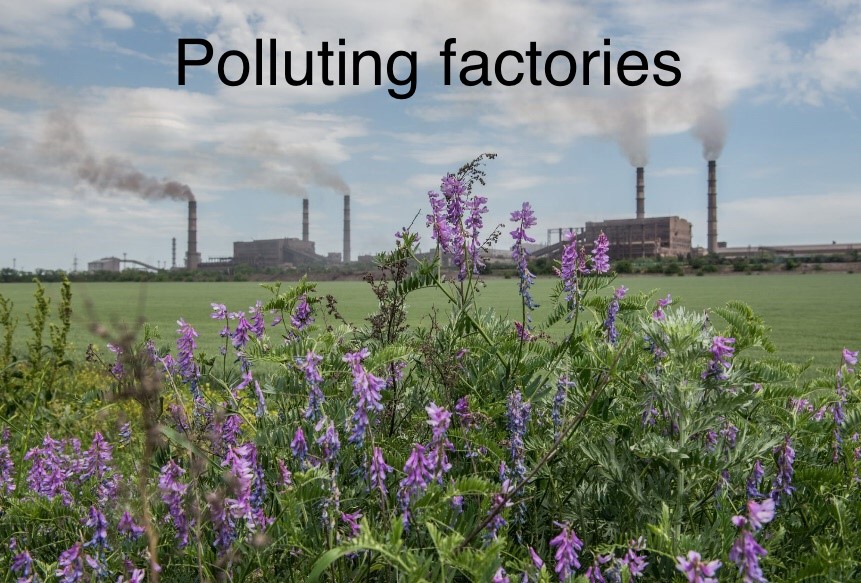Another quiet month on the beekeeping front, I’m afraid, with little to report. The bees are still active on the sunny days but the cold weather is keeping them in cluster still. This has been useful for me because it has meant I was able to remove the remaining honey supers from my out-apiary hives with little interruption from the bees. Unfortunately, two of the colonies (out of six) were no more, both having gone queenless for whatever reason. There were no bees in either hive, though evidence of robbing by wasps was apparent in one of them. This particular site has been plagued with problems from the outset, but it is in a rather exposed position weather-wise. I might have to re-think this location if things don’t improve.
On a more positive note, all my other hives are alive and thriving, even the small over-wintering nuclei. I have hedged my bets as usual by giving all my colonies a block of fondant as emergency back-up stores, just in case the very mild winter has caused early depletion of their own stores, but I find that not all colonies actually want to use this. However, it is still early days as far as winter is concerned, with a long way yet to go before the balmy days of Spring arrive.
I make my own fondant by gently boiling 6lb of sugar in 1 pint of water, constantly stirring for 10 minutes to prevent , letting it cool, and then pouring into moulds as the clear sugar solution starts to cloud. This, once cold, results in a solid block of sugar water which the bees can suck on like an ice-lolly to provide them with energy enough to keep warm.
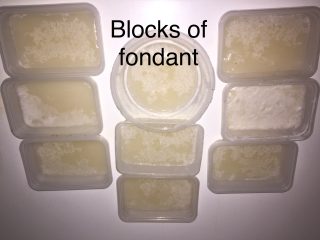 My course “Introduction to Beekeeping” is running again this term, so it will be great to get back into talking about bees and beekeeping again. Sadly, though, the new beekeepers that this course produces will not find it easy pursuing their craft in the current climate of environmental pollution and habitat loss.
My course “Introduction to Beekeeping” is running again this term, so it will be great to get back into talking about bees and beekeeping again. Sadly, though, the new beekeepers that this course produces will not find it easy pursuing their craft in the current climate of environmental pollution and habitat loss.
A study, published in Environmental Pollution, highlights the negative impact of common air pollutants on pollination in the natural environment. Air pollution significantly reduces pollination by confusing butterflies and bees, lessening their ability 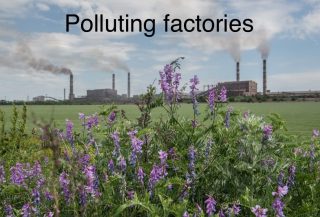 to sniff out crops and wildflowers. Since insects provide pollination of important food crops and native wildflowers, researchers have sought to understand how air pollution affects different pollinating insect species, of which some rely on scent above all other senses.
to sniff out crops and wildflowers. Since insects provide pollination of important food crops and native wildflowers, researchers have sought to understand how air pollution affects different pollinating insect species, of which some rely on scent above all other senses.
Scientists studying air pollutants from both urban and rural environments found that there are up to 70% fewer pollinators, up to 90% less flower visits, and an overall 31% in pollination reduction in test plants when there were several common ground-level air pollutants present – including diesel exhaust pollutants and ozone. Common air pollutants are diminishing the insects’ pollination by inhibiting them from sniffing out the crops and wildflowers that depend on them. Pollination supports around 80% of the total value of agricultural food production worldwide and is a huge contributor to food security and the economy.
The researchers theorise that the pollutants react with and change the scents of flowers, making them harder to find. Pollution could contribute to the continual decline of pollinating insects, by making it harder for them to locate their food (pollen and nectar), and previous laboratory studies have shown that diesel fumes can alter floral odours.
.Dr James Ryalls, a Leverhulme Trust Research Fellow at the University of Reading, who conducted the study, added: “The findings are worrying because these pollutants are commonly found in the air many of us breathe every day. We know that these pollutants are bad for our health, and the significant reductions we saw in pollinator numbers and activity shows that there are also clear implications for the natural ecosystems we depend on”,
since 70% of all crop species depend on pollination. The analysis of data exposed that there were 62-70% fewer pollinator visits to the plants located in polluted air.
I said during the first lock-down, and have said the same thing again during the subsequent lock-downs, that I thought my bees were calmer and more industrious in the absence of pollutants from road vehicles and aircraft and it looks like my anecdotal observations have been corroborated by science, a win that I would prefer not to have to claim.
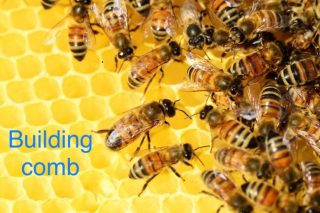 Not only are our pollinators under threat from air pollution, though, but DEFRA have approved the use of the neonicotinoid thiamethoxam on sugar beet in England. The Government has come under intense criticism for giving the green light to this potentially devastating pesticide,
Not only are our pollinators under threat from air pollution, though, but DEFRA have approved the use of the neonicotinoid thiamethoxam on sugar beet in England. The Government has come under intense criticism for giving the green light to this potentially devastating pesticide,
Cumbria Wildlife Trust have criticised the move as ‘unacceptable’ for the potentially devastating effect it could have on bee populations. The Trust says that the decision goes against the advice of its own scientists. The September 2021 minutes from the Expert Committee on Pesticides meeting said “The Committee agreed that the requirements for emergency authorisation have not been met” and “on the basis of the evidence presented to ECP, the Committee agreed that it is unable to support an emergency authorisation.”
The RSPB senior policy officer Stephanie Morren said: “Across England the wildlife we love is in decline, even the buzzing of bees in our farmlands and countryside is becoming quieter every year, yet without bees our farming system would collapse.” As part of the Government’s decision, George Eustice said thiamethoxam could only be used once a virus threshold had been reached, to ensure use “only if necessary”. We went through the same machinations in 2021 but luckily the virus levels were low enough that there was no need to use it. Fortunately for us here in Cornwall, there is very little if any sugar beet grown in the county but we should still be worried at a country level.
Going back to my approach to beekeeping in a sustainable way by using ½” starter strips of wax instead of full sheets of foundation, someone once said “If you want to make money you must use wax foundation”. Well yes, you will make money for a while but at the cost of your bees and the bees around you. While we do need some sort of guide for the bees to build new comb on, we don’t need a 41 X 26 cm wax sheet with a per-ordained cell size (usually 5.2 to 5.4mm) embossed in it. In the wild, bees build comb according to the needs of the individual colony and geographic location.
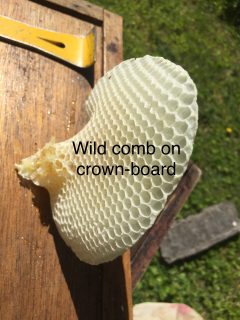 One of the first things we notice when we go foundationless (allow the bees to build their own comb with their own cell size), is that we get a lot of drones. Sometimes you can freak out when you look in a hive and see several frames of drones – not sporadic but back to back and neatly spread out. You can think you have a drone laying queen. But a few frames down you see worker cells and evidence of a good laying queen. After the initial surge of drone production the colony will begin producing more workers according to need and season. Why is this? Maybe we have been suppressing a natural instinct in honey bees to reproduce andadapt? The moment you give them the best conditions, they produce what they need.
One of the first things we notice when we go foundationless (allow the bees to build their own comb with their own cell size), is that we get a lot of drones. Sometimes you can freak out when you look in a hive and see several frames of drones – not sporadic but back to back and neatly spread out. You can think you have a drone laying queen. But a few frames down you see worker cells and evidence of a good laying queen. After the initial surge of drone production the colony will begin producing more workers according to need and season. Why is this? Maybe we have been suppressing a natural instinct in honey bees to reproduce andadapt? The moment you give them the best conditions, they produce what they need.
There is also the fact that much of the wax foundation available has pesticide residues ( over 50 in some cases) and many of the pesticides with the highest levels are the ones used by beekeepers themselves to control pests and diseases! It is also expensive. Whilst most beekeepers who use foundation will tell you that the bees build up faster when given foundation, how much faster and does it really matter? In a Research project in St. Lucia, it was observed in a side by side comparison that the foundationless and foundation colonies built up at around the same rate – I’ve 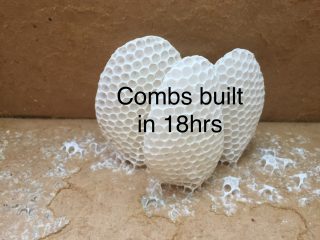 seen bees build up natural comb (5 frames) in less than a week! Why do we want to go faster than that? Over time, using regular full foundation sheets gradually weakens the species and delays the ability of the bees to produce resistant stock.
seen bees build up natural comb (5 frames) in less than a week! Why do we want to go faster than that? Over time, using regular full foundation sheets gradually weakens the species and delays the ability of the bees to produce resistant stock.
I have shown pictures in these blogs of mine showing natural comb build up on the underside of the top cover when I did not have additional frames in place in a one week period, so I shall continue to use starter strips in the season ahead.
Looking forward to the start of the beekeeping season. See you next month.
Colin Rees 07939 971104 01872 501313 colinbeman@aol.com

